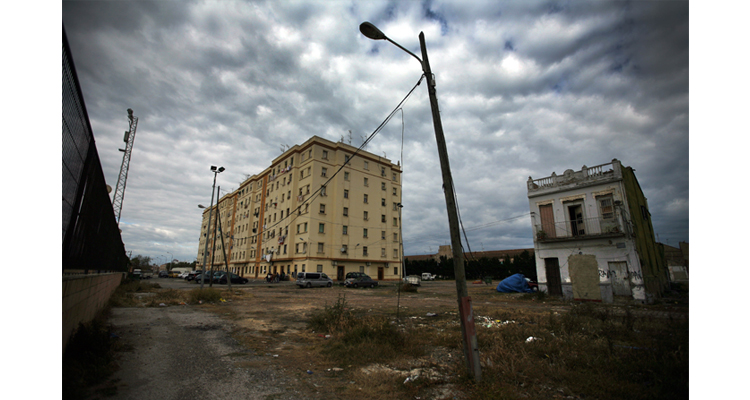

Chabolismo vertical 4
Jesús Ciscar
Archivo Jesús Ciscar

Los años 70 –pasaría también a lo largo de los 80- vieron la consolidación de diferentes polígonos urbanos ideados durante la década anterior para eliminar, supuestamente, la infravivienda. En realidad, se sustituían las chabolas por otro tipo de barracas de cemento y se sentaban las bases para el chabolismo vertical en barrios que corrían el peligro de ser ghettos. De Montjuïc los gitanos fueren empujados a La Mina; de Triana, a las 3.000 viviendas, y así por toda España. El alma de diferentes linajes se vio arrastrada en esos cambios, y se estableció el nefasto estereotipo colectivo de los últimos tiempos: el tópico de la ligazón contemporánea de los gitanos con la marginalidad suburbana, la droga, el conflicto vecinal. Si el Pueblo Gitano ha sobrevivido a este espectro, es que lo puede todo…
The 1970s saw the consolidation, which would continue throughout the 80s, of a number of urban districts devised during the previous decade in order supposedly to eliminate substandard housing. In truth they simply replaced the wooden huts of the shantytowns with concrete sheds, laying the foundations for what threatened to become high-rise ghettos. From Montjuïc the Romani were driven to La Mina, from Triana to the neighbourhood known as 3.000 viviendas (3000 homes), and so on throughout Spain. The heart and soul of different family lineages was dragged along with these changes, creating the horrendous collective stereotype of recent years: the clichés which today associate the Romani with the marginalised outskirts of the city, drugs and neighbourhood disputes. If the Romani People have survived these spectres, they can survive anything...
Los años 70 –pasaría también a lo largo de los 80- vieron la consolidación de diferentes polígonos urbanos ideados durante la década anterior para eliminar, supuestamente, la infravivienda. En realidad, se sustituían las chabolas por otro tipo de barracas de cemento y se sentaban las bases para el chabolismo vertical en barrios que corrían el peligro de ser ghettos. De Montjuïc los gitanos fueren empujados a La Mina; de Triana, a las 3.000 viviendas, y así por toda España. El alma de diferentes linajes se vio arrastrada en esos cambios, y se estableció el nefasto estereotipo colectivo de los últimos tiempos: el tópico de la ligazón contemporánea de los gitanos con la marginalidad suburbana, la droga, el conflicto vecinal. Si el Pueblo Gitano ha sobrevivido a este espectro, es que lo puede todo…
The 1970s saw the consolidation, which would continue throughout the 80s, of a number of urban districts devised during the previous decade in order supposedly to eliminate substandard housing. In truth they simply replaced the wooden huts of the shantytowns with concrete sheds, laying the foundations for what threatened to become high-rise ghettos. From Montjuïc the Romani were driven to La Mina, from Triana to the neighbourhood known as 3.000 viviendas (3000 homes), and so on throughout Spain. The heart and soul of different family lineages was dragged along with these changes, creating the horrendous collective stereotype of recent years: the clichés which today associate the Romani with the marginalised outskirts of the city, drugs and neighbourhood disputes. If the Romani People have survived these spectres, they can survive anything...